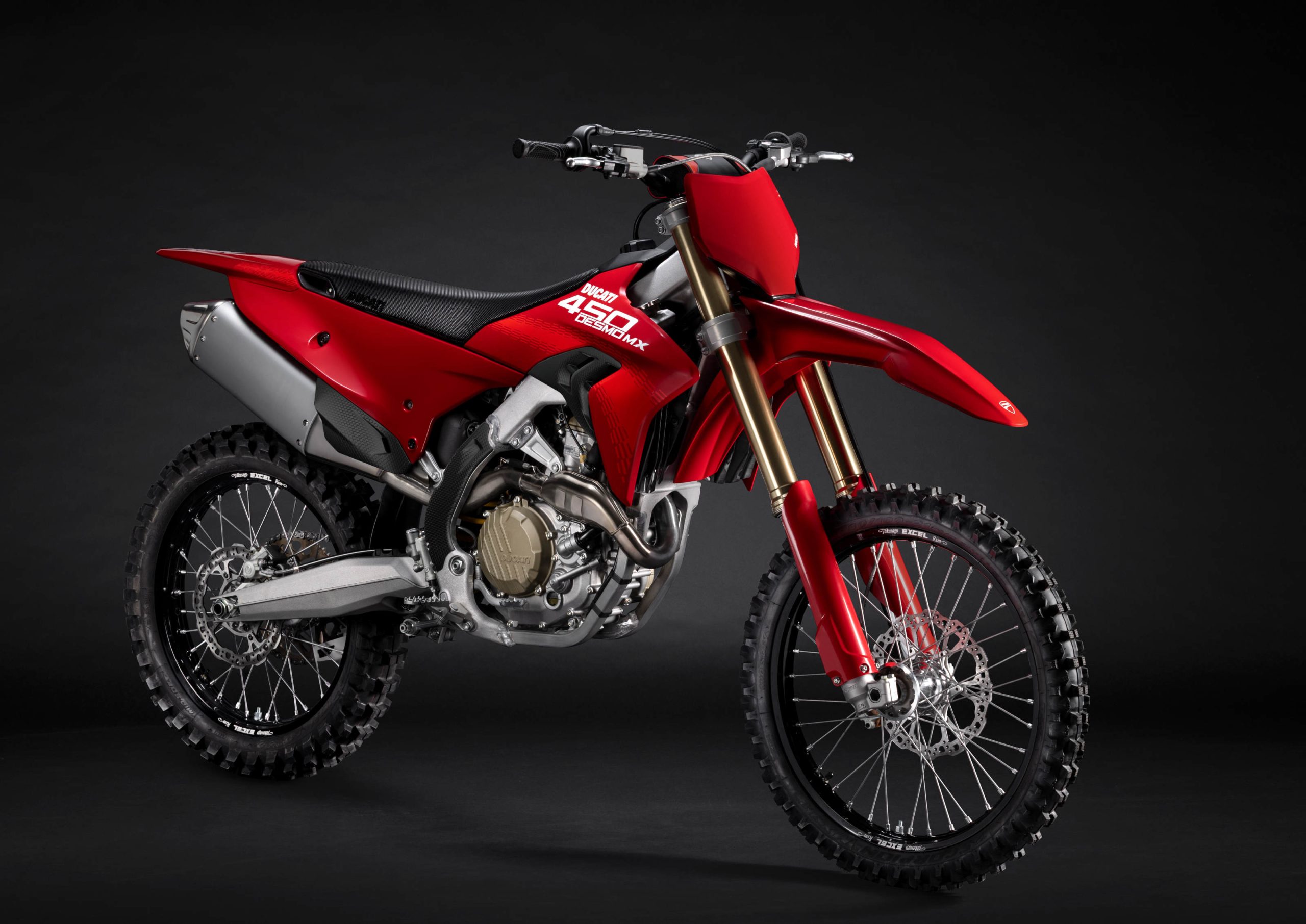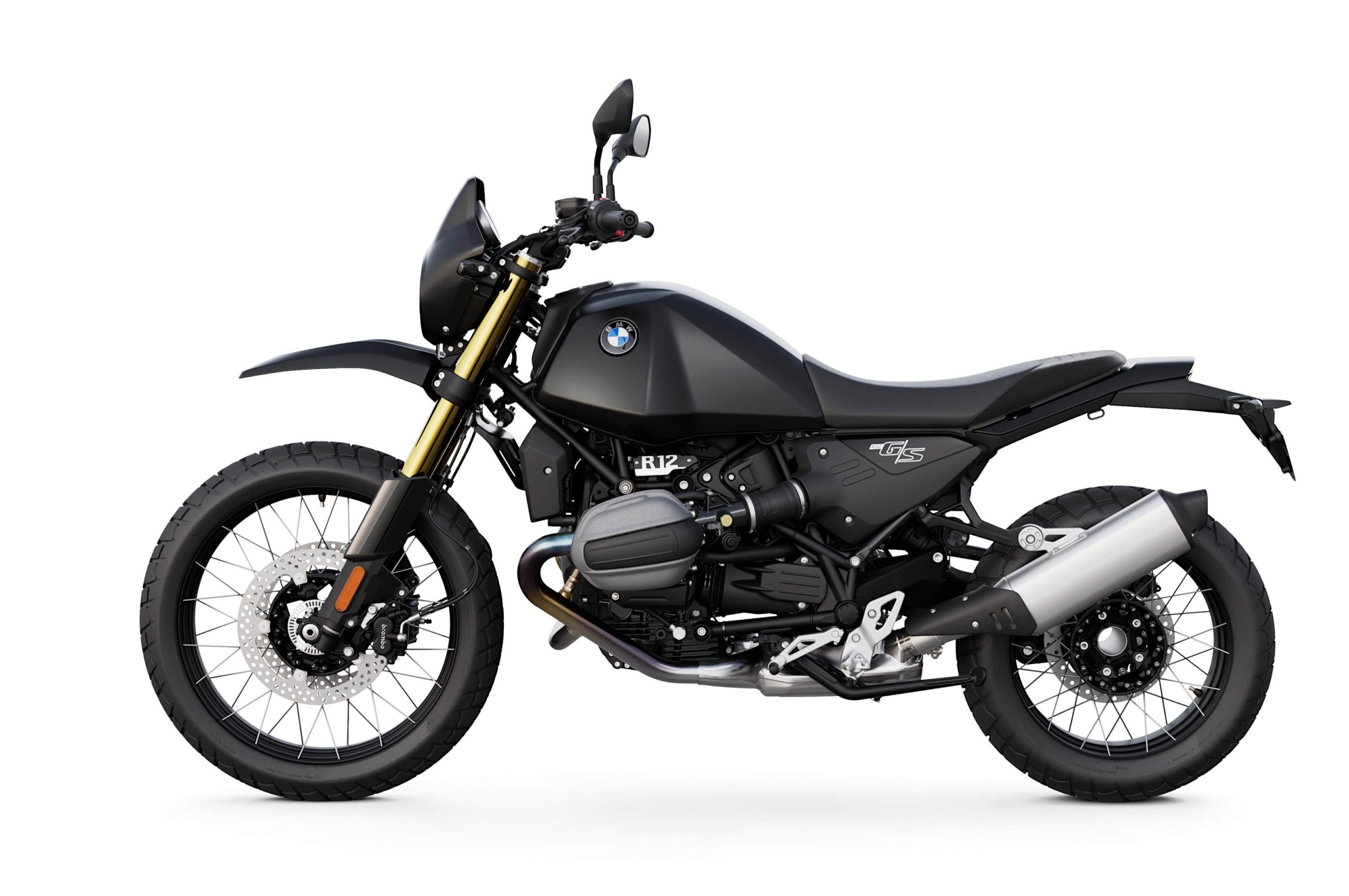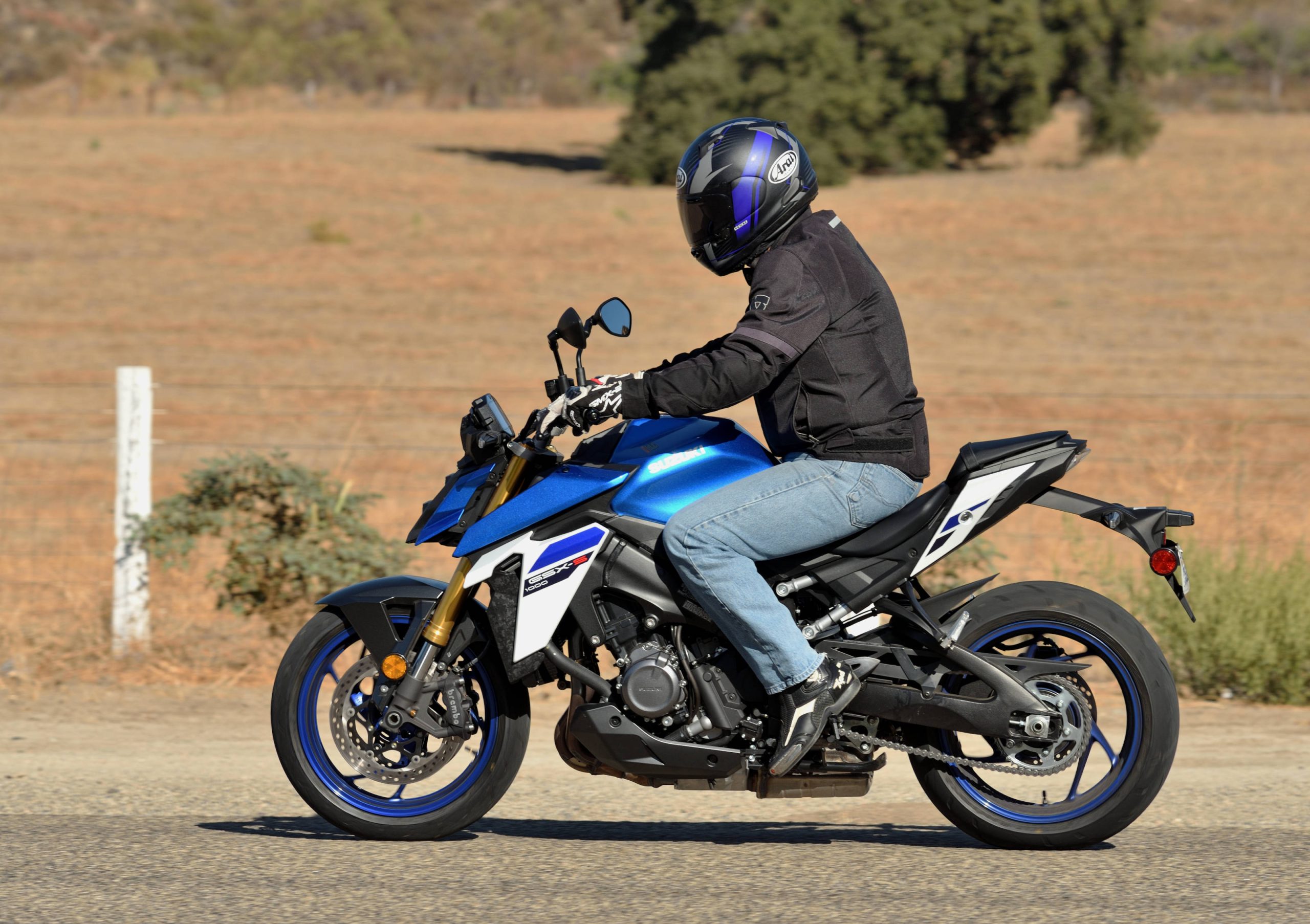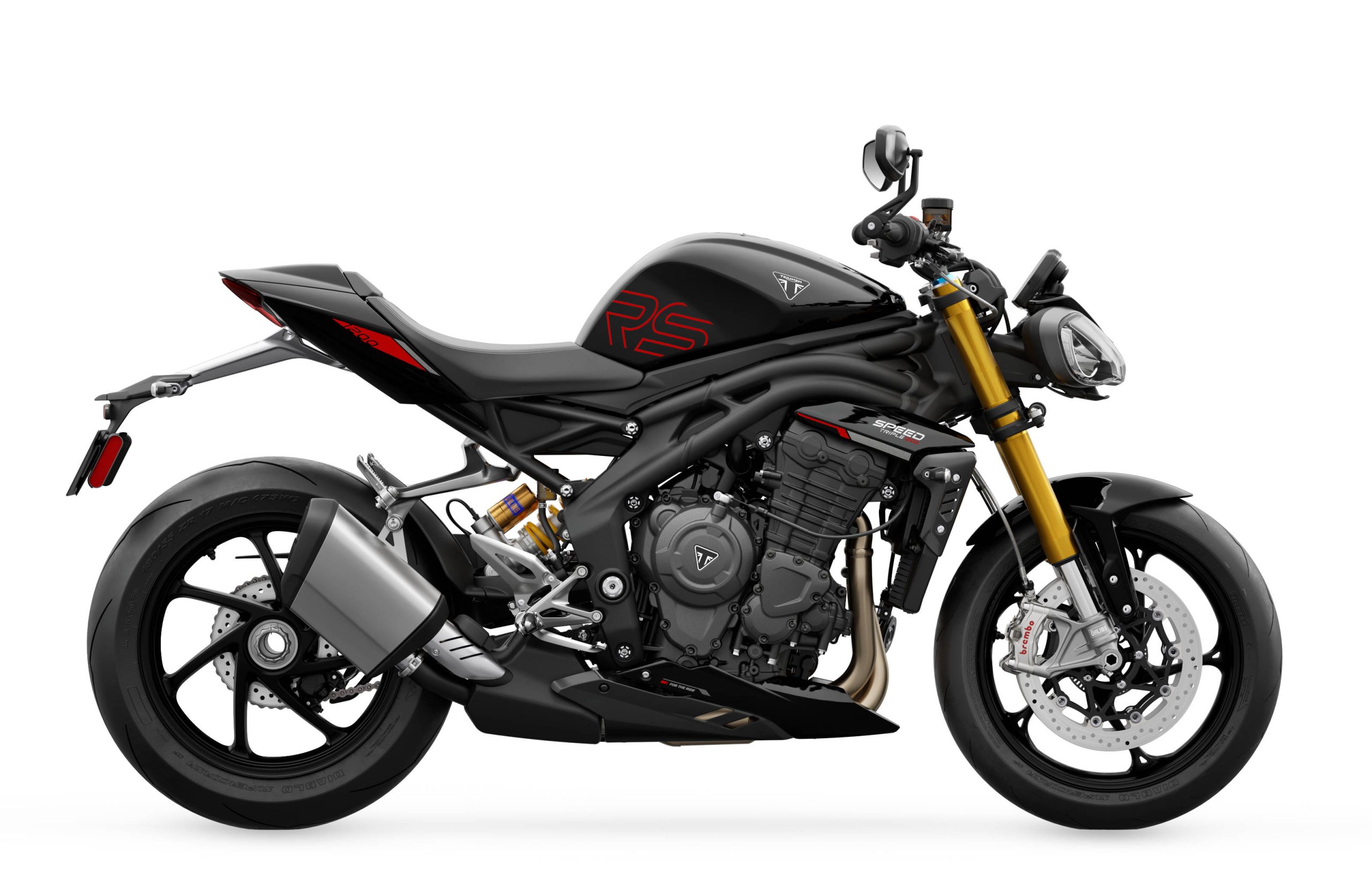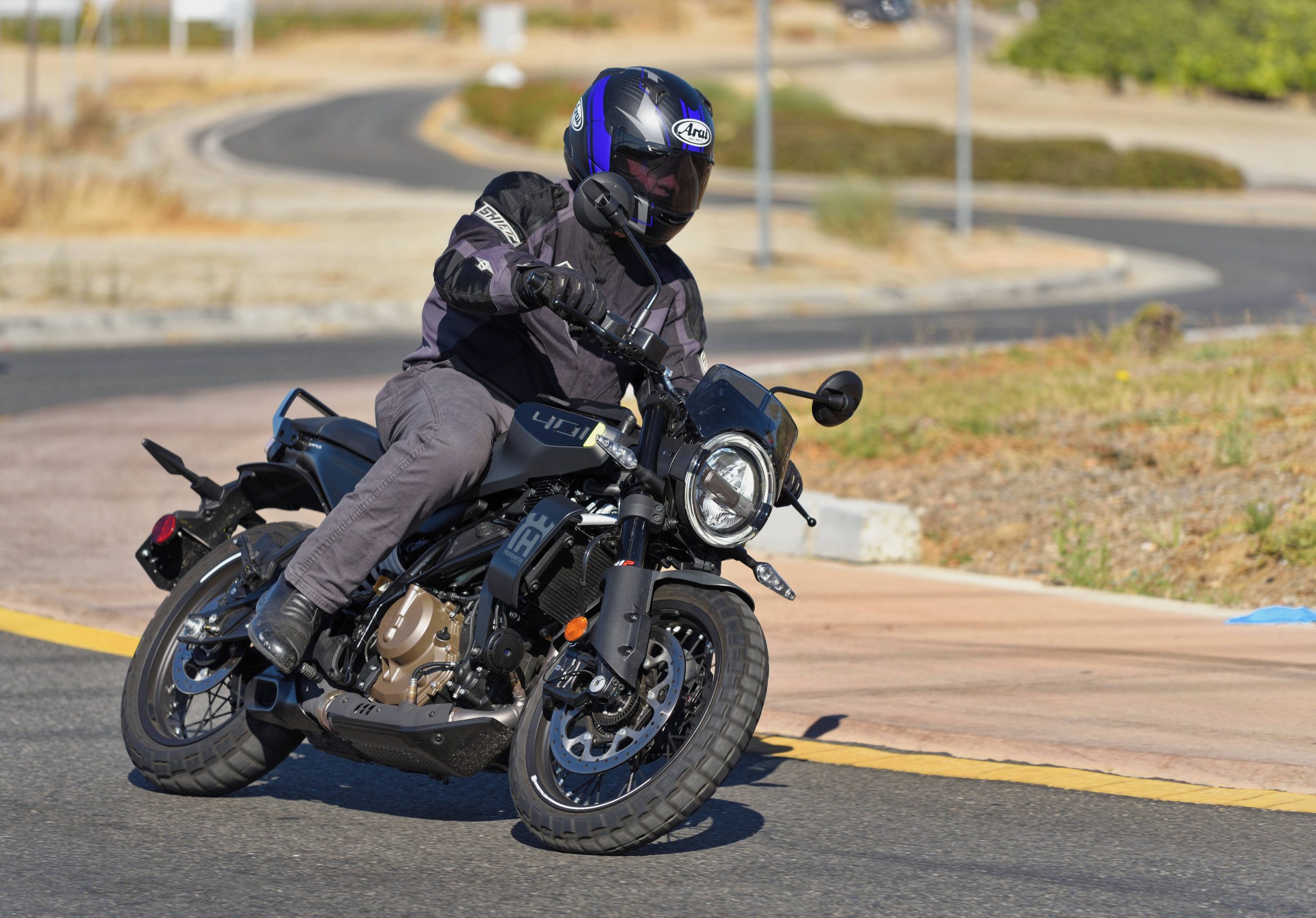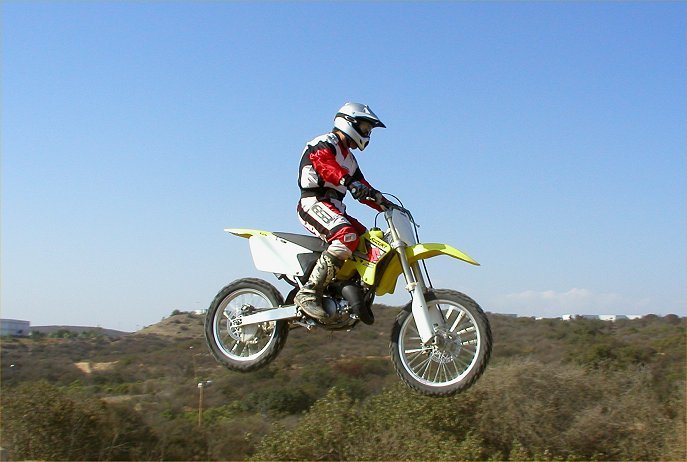
An interesting trend is occuring in the world of amateur motocross. Ten or so years ago, when a healthy 250 was making roughly 40 horsepower, and a healthy 125 was making 27 or 28, lots of amateurs rode 250s. That is still the case, but there is a clear trend towards the 125-class machines. The new 250s make 45 to 50 horsepower at the wheel, and they are simply too much to hang on to for many amateur riders (for more than a few laps, anyway). The 125s, meanwhile, are making over 30 horsepower, stock, and they keep getting lighter, as well. Riders are gravitating to the 125cc machines.
One of the 125-class machines that has had engine performance at or near the top of the class for quite some time is the Suzuki RM125. No stranger to the top rung in the magazine shoot outs, the Suzuki RM125, like any other modern motocross bike, never stands still. Constant refinement year-to-year, and occasional revolutionary redesign, mark its history.
Just a couple of years away from a radical, ground-up redesign, the 2003 RM125 nevertheless has some significant changes, both in the engine compartment and in the chassis. Beginning with the engine (which was no slouch last year), Suzuki changed the exhaust valve linkage system and reshaped the valves themselves for smoother power delivery and improved low-to-mid rpm power. New air ducts into the redesigned air box are a feature tested directly by the Suzuki motocross team last year, and are claimed to provide improved throttle response on the stock 2003 RM125.

The redesigned engine should run cooler with a ten percent larger radiator (now the same size as the RM250 radiator).
The 2003 RM125 chassis has stiffer fork springs, and revised compression damping in a lighter-weight fork. The shock, meanwhile, got significant changes to the rebound damping and greater durability in the form of a hardened piston shaft.
Other chassis changes include wider footpegs, redesigned rear brake pedal with increased ground clearance, modified subframe to assist the air flow to the new air box, and a more durable front wheel.
Thicker, firmer seat foam in the ’03 model addresses a complaint many riders had last year with the overly cushy seat.
MD put test riders with skill levels from beginner to pro on the 2003 RM125, and each rider was favorably impressed. Suzuki did not take a backwards step in any category versus the 2002 machine in the opinion of MD’s riders.

Beginning with engine performance, the 2003 RM125 has a bit more low end than last year, and transitions more smoothly, but quickly, into a very stout mid-range to top-end pull. Indeed, it is this motor characteristic that made riders of different skill levels happy. Beginners could ride the RM125 lower in the power band, and still transition smoothly into the potent mid-range with a little clutch work. Our professional-level tester, Russ Somers, rode the bike without ever allowing the revs to fall below the mid-range, and was surprised by the ability of the RM125 to clear obstacles on a motocross track that normally required the quick burst of acceleration out of corners available from 250-class machines.
The smoother power delivery of the 2003 model can be somewhat deceptive, but the proof is in the bike’s ability to accelerate competitively on the motocross track — something we had no problem with. In fact, the 2003 RM125 is a very fast 125, and a very rideable one, at the same time.
There are no slouches in the motor department this year in the 125 class, however, and Suzuki needs a good chassis to go along with its stellar engine. Suzuki has delivered here, as well. The always light-feeling RM125 can slice and dice corners again this year, but it does so with a bit more stability and predictability than last year’s machine. Credit the suspension changes here. Suzuki has learned that stiffer fork springs and lighter valving are frequently an improvement over heavier valving and lighter springs. The stiffer fork springs keep the front end of the bike riding higher in the stroke, and the fork feels more plush, and more controlled at the same time. The shock did its job, as well (although it didn’t shine quite as brightly as the fork). Overall, the 2003 RM125 has a balanced, composed feel on the track, and doesn’t bottom, front or rear, unless being ridden aggressively by faster/heavier riders. As always, faster/heavier riders could benefit from stiffer springs, although the new fork springs hold up quite well for riders of all skill levels.
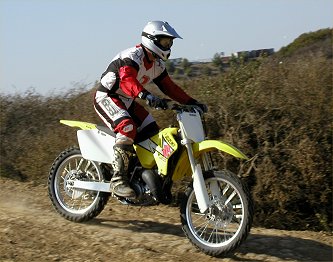
The ergonomics of the 2003 RM125 are not much different from last year, except that the thicker, stiffer seat foam makes it easier for the rider to more fore and aft on the machine. This makes cornering easier, because it is a more fluid movement for the rider to weight the front wheel by shifting his weight over the tank. The Suzuki is still slim and easy to move around on, without any problems noted with the side panels of the bike (boots do not hang up while moving around on the bike).
The RM125 is extremely slim — mimicking a trend for motocross bikes, in general. Some riders feel the new bikes are getting too thin, and that this hinders their ability to grip the bike with their legs while riding. Other riders feel that thinner bikes, like the new RMs, feel even nimbler and easier to ride, as a result of their slender profiles. In any event, the profile of the RM is similar to other bikes in the class, all of which have received reduced girth in the mid-section through recent redesigns.
Ninety-nine percent of the time the RM125 shifted faultlessly, but we did experience a few missed shifts (something we have not experienced on RMs in the past). Normally, you just look at an RM shift pedal and you find the next gear. Give the 2003 RM125 a little firmer boot, and you will have no problem.
Suzuki RMs have a reputation for nervous handling, but we find that, each year, Suzuki seems to gain a bit more stability, without sacrificing its legendary turning ability. The 2003 RM125 handles extremely well. It still flicks to the inside line in corners, but, undoubtedly aided by the stiffer fork springs, tracks well in a straight line this year. It is not the most stable bike in the class, but it makes an excellent compromise between stability and turning.
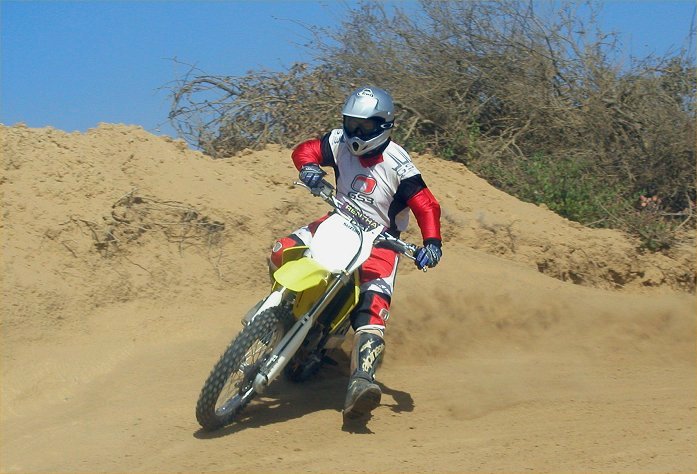
In the end, all of our testers agreed that the 2003 RM125 is an excellent motocross weapon. The new suspension settings really stand out as a step forward from last year’s bike, and the already-excellent motor has been improved, as well. U.S. MSRP for the 2003 Suzuki RM125 is $4,999.

